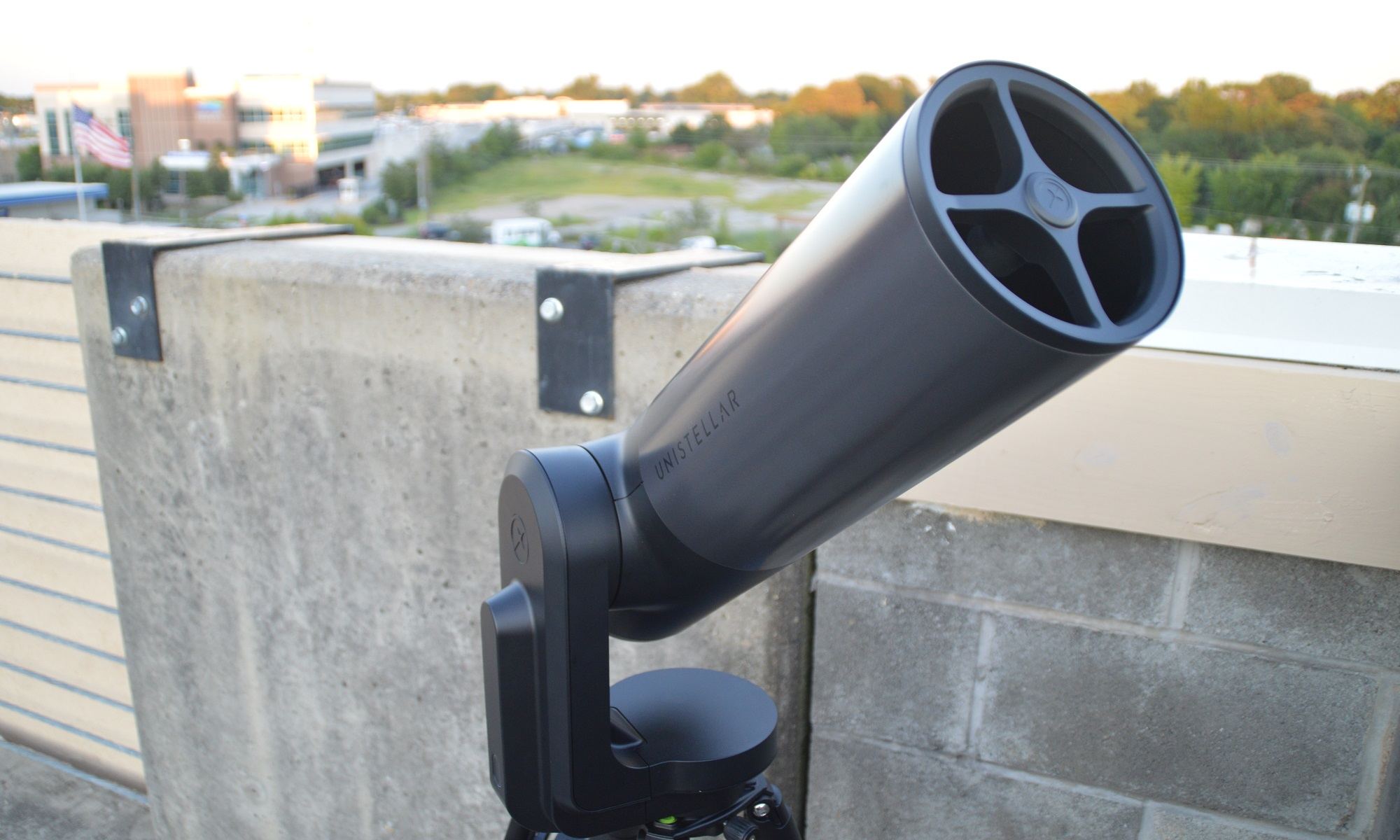A leader in the ‘smartscope’ industry releases its exciting new eQuinox telescope.
It’s every amateur astronomer’s dilemma. If you’re like me, the basic equation of ‘should I observe tonight?’ is always up against the same basic equation: is the time and effort worth it? Living under bright downtown urban skies, my options are to either head to the parking garage rooftop (and be restricted to bright targets), or load up, drive for several hours, setup at a remote dark sky site, observe, then repeat the reverse process and head home in the early AM hours…
In the above scenario, the best telescope is the one you end up using most… and it’s in this capacity that Unistellar’s new eQuinox ‘smartscope’ excels. We had a chance to review their original eVscope last year, and the eQuinox is a very similar unit, with a few key innovations.

I’ve owned many telescopes of all types over the years, going back to some of the very first ‘goto’ units in the 80s… most of which, needed a little astronomical know-how to successfully get to a target on the first night out. I can say that Unistellar’s eQuinox works as advertised, right out of the box: simply secure the unit to the tripod, turn it on, connect it to your phone’s wifi, put it through a quick sky alignment (the unit uses plate-solving and GPS to know where it is and what it’s pointed at) and you’re off and running. Suddenly, with the eQuinox telescope, deep-sky targets are again in grasp, even from our downtown parking garage rooftop perch. For example, we managed to nab faint +11th magnitude comet T2 Palomar with the ‘scope, a target we’d never bother to go after from downtown.

Unlike other star-pattern alignment units, the eQuinox is also very forgiving. We found it was able to easily able to accurately align even under partly cloudy skies, just 30 minutes after sunset. The app gives the user suggested targets currently above the horizon, or you can custom enter the Right Ascension/Declination coordinates (great for comet hunting).

Ironically, much like a rich field refractor, the wide-field (about the size of a Full Moon), doesn’t deliver amazing planetary views: instead, the eQuinox really shines when it comes to deep-sky astronomy.
Fine-focusing of the unit’s optics is a snap, and is accomplished using the large knob on the back of the tube assembly and the Bahtinov aperture mask. The unit even comes with a small toolkit to adjust the mirror alignment (if it’s even needed) and the tripod.
Doing Science with the eQuinox
But the really interesting use for the eQuinox is its potential to use the telescope to do real science. To this end, there’s a tab in the control app for ‘science’ were users can scan fields uploaded to SETI/Unistellar’s database that are analyzed for ‘cometary activity’ and ‘planetary defense’ (think asteroids). Already, users have tracked stellar occultations to map asteroid profiles and followed exoplanet transits, as the light from the host star dips ever so slightly…that’s right. Exoplanet transits, followed with a small backyard telescope. (what a time we live in!)
…and yes, in this era of remote work and learning, you can use the eQuinox telescope on Zoom.
Here’s what’s new on the eQuinox telescope, versus The eVScope:
– There’ s no side turret eyepiece/screen
– Comes with a sturdier, adjustable tripod
– More internal memory and a longer battery life
– A lighter telescope (in fact, the company makes a custom backpack, just for the telescope and the tripod).
Here are the side-by-side specs:

Our recent star party experience with the telescope also revealed another place the eQuinox really shines: public outreach. Instead of dividing my time between finding the target, operating the telescope, and explaining it to the audience, I could just ‘talk space,’ while the telescope was acquiring the target. Plus, clamping the phone to the tripod leg allowed us to simply hold court around the screen, rather than having everyone queue up one-at-a-time to the eyepiece. We even showed off elusive, fainter targets such as the Blue Snowball planetary nebula and the Eastern Veil Nebula in Cygnus, not your usual star party faves…

What we would like to see: a red light filter for the app (we worked around this in the field using the built-in blue-light filter on my Galaxy S9, plus dimming the overall view)
-A handle to grab on the side of the tube/armature during assembly and transport.
-A way to use the mobile data with your phone, while the app is connected to the ‘scope.
Are smartscopes the wave of the future? I definitely see a niche for them when it comes to battling light pollution and public outreach… and still, I wonder. I still use my 1980s vintage orange tube SCT on occasion—but what will happen to all of those smartscopes a decade from now, when the internal batteries have worn down and we’ve all moved on from using Iphones?
Still though, I found myself encouraged to get out for a quick rooftop peak at a new novae or comet with the eQuinox telescope on nearly every clear night, something I probably would’ve otherwise passed up. And perhaps that utility is where the eQuinox telescope truly shines.

